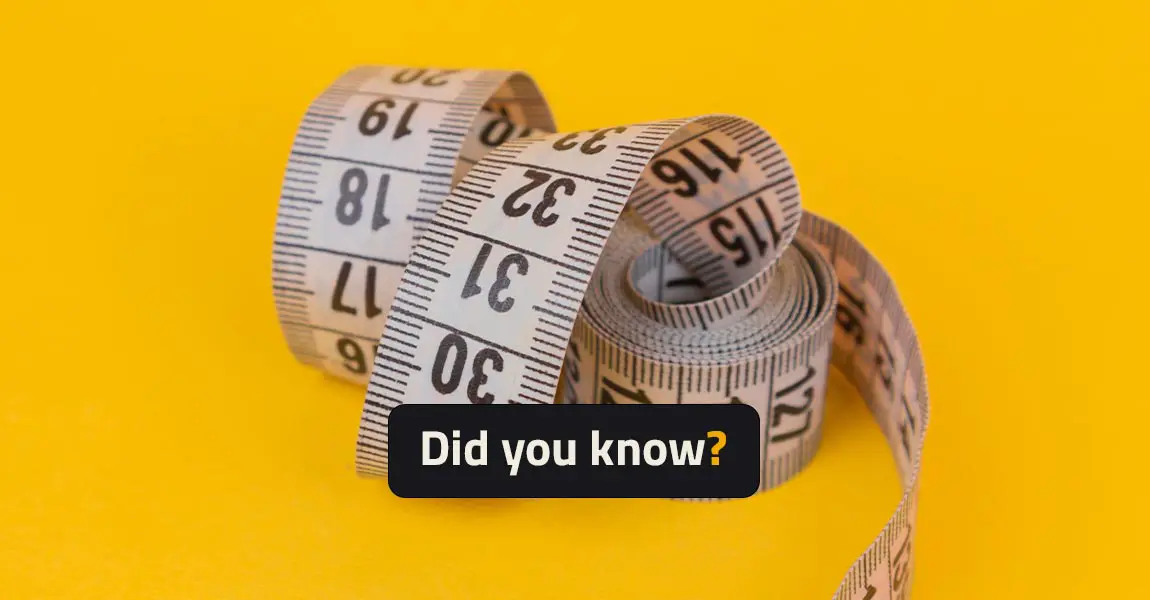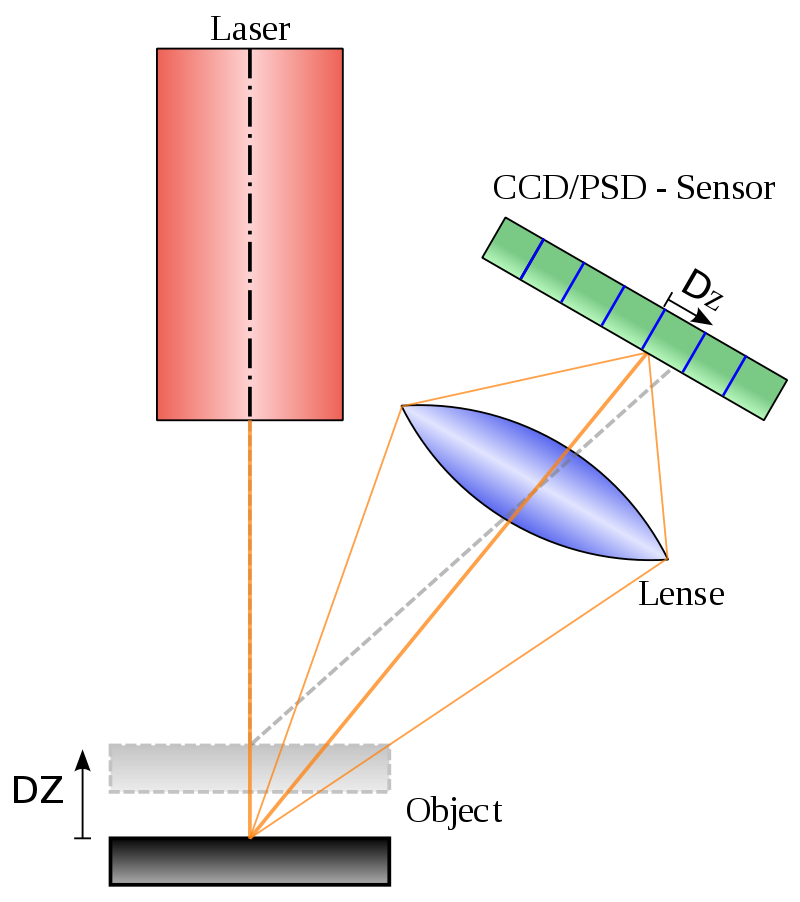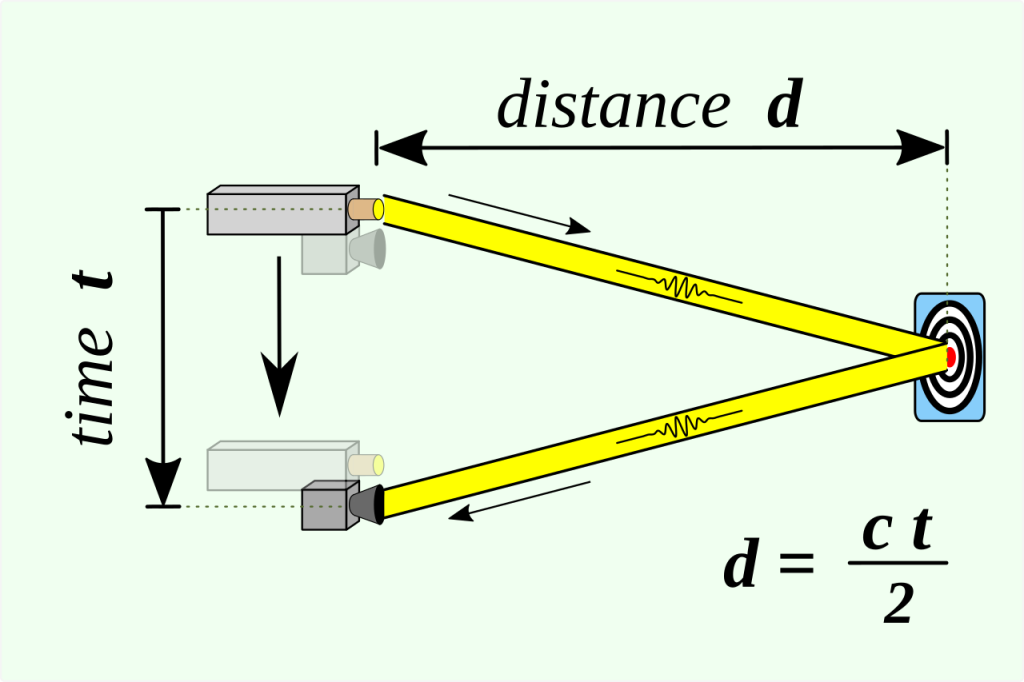Three ways to determine distance using LiDAR

Did you know?
There are three different ways to determine distances using LiDAR.
LiDAR sensors are based on the use of one or multiple laser beams to perform distance measurements. They are active sensors, emitting radiation at a set wavelength and receiving the return signal. There are three main techniques for determining a distance measurement from the emission and reception of laser radiation: triangulation, time-of-flight, and phase shift.
Triangulation measurement systems
They are composed of a laser transmitter and a camera fixed between them by a constant angle (Figure 1). The distance and orientation between the camera and the laser transmitter are known. The laser emits on the target object a pattern, which is visualized on the camera image. Depending on the distance to the surface, the point appears at a different location in the field of view of the camera. By means of trigonometry, it is then possible to determine the distance between the laser source and the target object. This technique is mainly used for portable (hand-held) LiDAR systems that operate at short distances.
For this type of system, the measurement error is directly related to the distance to the measured object. For this reason, its mainly used to a limited range of applications, often less than 10 m. It should be noted that this technique can achieve an accuracy in the range of ten micrometers.

Georg Wiora (Dr. Schorsch), Principle of a laser triangulation sensor, April 10, 2006
Time-of-flight measurement systems
Time of flight (ToF) measurement corresponds to the travel time of a laser pulse from its emission to the detection the reflected part from a target. Knowing the refraction index of the medium and using the speed of light, it is then possible to deduce the distance of travel of light (Figure 2).
Limiting the performance of ToF laser systems is the acquisition speed. These systems need to receive the return signal first before emitting another laser pulse. But depending on the needs it is possible to increase the rate of laser shots (number of points) but at the cost of the distance. They are used for long-range distance calculations such as space, air or automotive LiDAR. YellowScan’s LiDAR systems are among them.

RCraig09, Basic time-of-flight principles applied to laser range-finding, May 1, 2020
Phase shift measurement systems
Compared to ToF systems, phase shift systems require the use of continuous lasers. By modulating it (in amplitude of frequency), it is then possible to measure the phase difference between 2 beams. The beams are separated at the exit of the LiDAR system. One is going directly to the detector and the second one is going to the target and coming back.
These measuring systems generally have a higher data acquisition speed, better resolution, lower noise, and higher accuracy than time-of-flight measuring systems. The limit of those systems depend on the type of modulation used (aperiodic or periodic). This technology is found in medium-range systems such as terrestrial and indoor LiDAR scanners.
N.B. Author Léa Moussy – The content of this article is protected by copyright.



